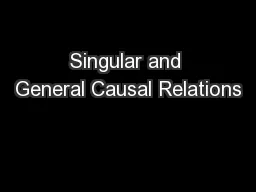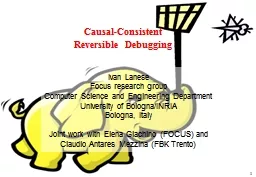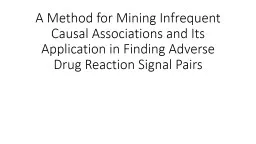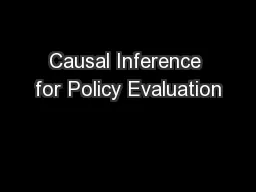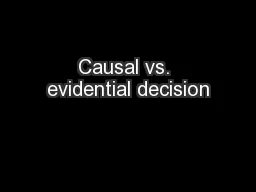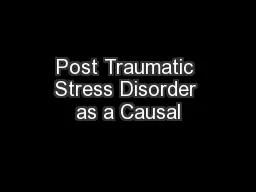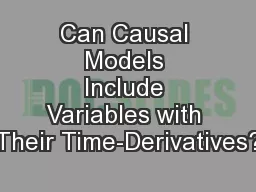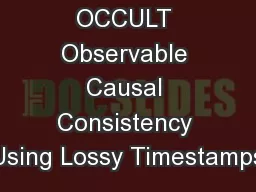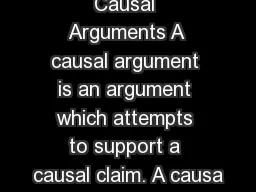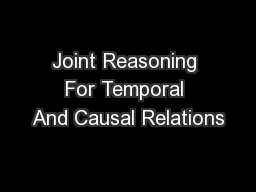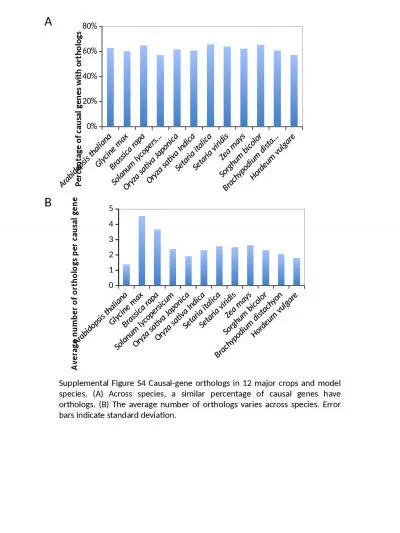PPT-Singular and General Causal Relations
Author : sherrill-nordquist | Published Date : 2018-10-21
A Mechanist Perspective Stuart Glennan Butler University The singularist and generalist view of causation The generalist view Particular events are causally related
Presentation Embed Code
Download Presentation
Download Presentation The PPT/PDF document "Singular and General Causal Relations" is the property of its rightful owner. Permission is granted to download and print the materials on this website for personal, non-commercial use only, and to display it on your personal computer provided you do not modify the materials and that you retain all copyright notices contained in the materials. By downloading content from our website, you accept the terms of this agreement.
Singular and General Causal Relations: Transcript
Download Rules Of Document
"Singular and General Causal Relations"The content belongs to its owner. You may download and print it for personal use, without modification, and keep all copyright notices. By downloading, you agree to these terms.
Related Documents

